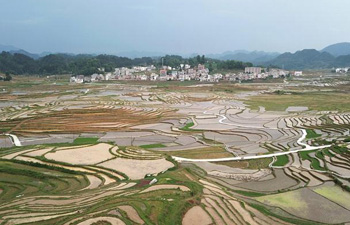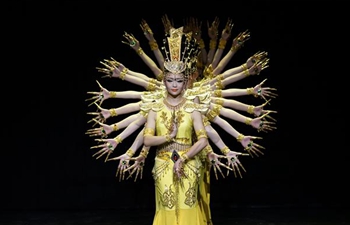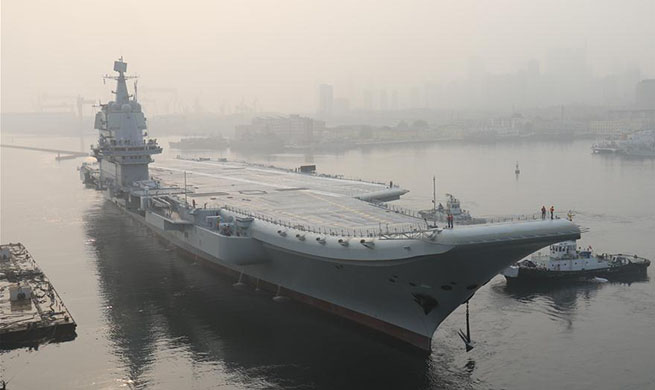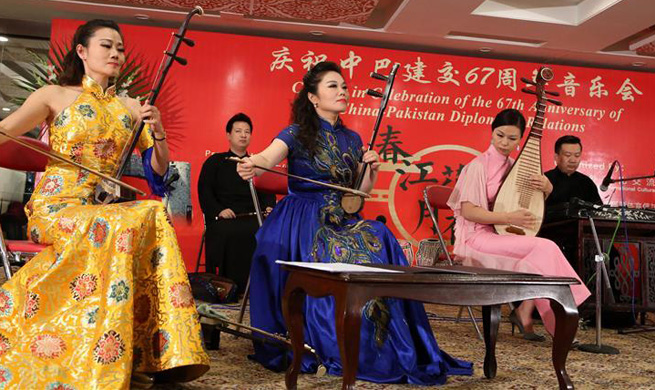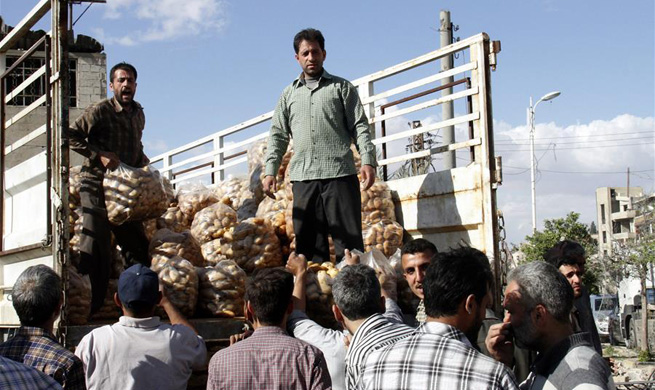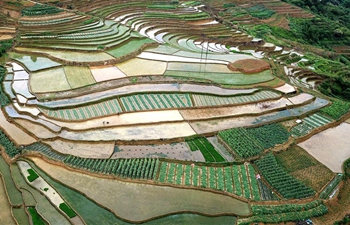GUANGZHOU, May 14 (Xinhua) -- Bocuse d'Or, a prestigious gastronomic contest also known as the "culinary Olympics," concluded its Asia Pacific selection during the past week in south China's Guangzhou, where increasing communication between western and eastern gastronomy creates new inspirations.
Japanese chef Hideki Takayama won the contest after a 5-hour-and-35-minute challenge. It was his second continental title after winning in 2014, and Japan's third consecutive win.
But new faces in the region also performed well.
Thai chef Natcha Saengow, 23, nailed second place, while Seon Yeong Gu from the Republic of Korea, 24, took third.
"Bocuse d'Or is all about promoting new chefs and different cuisines," Florent Suplisson, director of the event, told Xinhua. "Every country has its own tradition and its own produce, and we want to show that at Bocuse d'Or. That's our purpose."
Australian contestant Michael Cole and Singaporean Noel Ng Choon Wee, 4th and 5th place, respectively, will also join the Bocuse d'Or finale next January in Lyon, France.
The contestants were required to prepare 10 plates and a platter, using veal tenderloin and salmon respectively. They were also encouraged to bring in their unique cultures.
Saengow mixed salmon with Thai clams; Cole used Australian jarrah to smoke the fish; while Chinese chef Fu Zhuwei wrapped it in dumplings.
Founded by renowned French chef Paul Bocuse 31 years ago, Bocuse d'Or today includes some 60 national and four continental selections in Europe, Asia Pacific, the Americas, and Africa. Numerous new ideas and inspirations are presented on the platform.
"This is what we call gastro-diplomacy," Suplisson added.
Aside from the contestants, elite chefs from across the world, many with Michelin stars, also joined the event.
During their stay in Guangzhou, more than 80 foreign chefs visited local food markets and learned about the produce. Some of them even cooked at local kitchens.
Karl Firla, owner and head chef of Oscillate Wildly in Sydney, was comfortable with the exotic local seafood and heavy Chinese kitchen knives.
"They're not so strange from my perspective, because obviously we travel a lot around the world to see what's happening in the industry," Firla said.
In the old days, cuisine was brought to different places mainly by immigrants, with their own traditions, emotions and stereotypes. But as Firla pointed out, with higher mobility and more access to different cultures, the spread and fusion of food has become an everyday reality.
"Different tastes are brought together in an easier and more creative way, and being exposed to such diversity can be a privilege," the Australian chef said.
"With all the diversity of cultures and the mixing, we're starting to build our own identity now," Firla said. "So it's a fantastic time to be in Australia and contribute to so many different components of our industry."
Many of these star chefs visiting Guangzhou have cross-cultural backgrounds, such as Brazilian and Colombian nationals studying in France, or French cooks working for London hotels.
Christophe Paucod, a Michelin-star chef and restaurant owner, taught French cuisine at "Le Cordon Bleu" in Tokyo 20 years ago, and noticed that more and more students were now from other Asian countries.
"We have more and more students from China now. And those cooking schools in Paris are also witnessing the same trend," Paucod said.
Chinese chef Fu Zhuwei, who once studied in Turin, Italy, was given a wild card to the Bocuse d'Or finale. Deeply proud of Chinese cuisine, Fu hopes to present the food to more customers and critics.
He also believes the food and beverage industry in China should further progress, especially in standardization.
"Chinese cuisine has a long, long history, but we should keep learning," Fu said.







